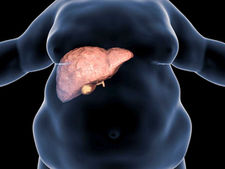
Heart Valve Diseases
Where is our heart located?
Our heart is located inside the ribcage, behind the breastbone (board of faith), in a sac called pericardium and on the diaphragm muscle (respiratory muscle). Our heart can be roughly compared to a cone, with its base extending to the right, back and up, and its top extending to the left, front and bottom. The weight of the heart is approximately 220 grams in women and 300 grams in men.
What is the function of our heart?
All tissues in our body need oxygen and nutrients to survive. These vital substances are transported to the farthest points of our body through blood. The main function of the heart, which consists largely of muscle tissue, is to circulate blood throughout the body. Our heart contracts an average of 70 times per minute and approximately 100,000 times per day, pumping approximately 8 tons of blood to our body every day. Therefore, it would not be wrong to say that our heart is at the center of our lives.
What is the structure of our heart, how does it pump blood?
Our heart has a structure with four cavities. It consists of two atriums and two ventricles. Thanks to a wall structure between them, the heart chambers are divided into right and left halves. Atriums are the upper cavities of the heart and are the first cavities where the blood brought to the heart by the veins is poured. While the right atrium is the space where venous blood that has lost its oxygen from the whole body is poured, the left atrium is the space where the blood that returns to the heart after being oxygenated in the lungs is poured. Ventricles are the main pump chambers of the heart. The function of the right ventricle is to pump the oxygen-poor blood coming to it through a valve (tricuspid valve) after being collected in the right atrium, to the lungs via the main pulmonary artery as a result of the opening of another valve (pulmonary valve). The task of the left ventricle is to pump the oxygen-rich blood, which collects in the left atrium after being re-oxygenated in the lungs and comes to it through a valve (mitral valve), to the whole body via the aorta after the opening of another valve (aortic valve).
What is the main function of the valves in the heart?
Blood always flows in one direction within the heart, and this is achieved thanks to the valves in the heart that can be opened in one direction. Blood passing through a valve always flows forward because the valve closes when it wants to return.
How many valves are there in our heart and where are they located?
There are four valves in the heart. The aortic valve is located between the left ventricle and the aorta. The pulmonary valve is located at the beginning of the main pulmonary artery. The other two valves (tricuspid and mitral valves), also called atrioventricular valves, are located between the atria and ventricles. After the atrium fills with blood, the blood passes through these valves and flows into the ventricles. Contraction of the ventricles causes the pressure to increase. Thanks to the increased pressure, the inlet valves (atrioventricular valves) are closed, preventing the blood from flowing back towards the atria. On the other hand, high ventricular pressure also allows the exit valves (aortic and pulmonary artery valves) to open so that blood can leave the heart. The right atrioventricular valve is located between the right atrium and the right ventricle and is called the tricuspid valve. The left atrioventricular valve is located between the left atrium and the left ventricle and is called the mitral valve.
What is the structure of the valves in our heart and how do they work?
Heart valves have thin leaflets called leaflets. The (atrioventricular) valves (tricuspid and mitral valves) between the atria and ventricles of the heart are similar to each other in the way they work. While the tricuspid valve has three leaflets, the mitral valve has two leaflets. These leaflets are held tightly to a ring-like structure at their base. These leaflets move away from each other during the passage of blood, bringing the valve to the open position. During the contraction of the ventricles, their free edges move upwards, kissing each other, allowing the valve to close. The leaflets are attached to the muscle groups (papillary muscles) in the ventricle with rope-like structures (chordae tendineae) emerging from the lower parts of their free ends. During contraction of the ventricles, due to the increasing pressure, the valves between the atria and ventricles are closed and blood is prevented from flowing back into the atria. This normal working order is achieved by all lid and under-lid structures functioning harmoniously with each other. Any pathology that disrupts the functioning of these valve and sub-valve structures (ring-like structure, leaflets, rope-like structures and papillary muscles) prevents the valve from opening and closing normally, causing problems in the valves (mitral and tricuspid) between the atria and ventricles. Aortic and pulmonary valves are similar to each other in terms of structure (both consist of three leaflets) and mode of operation. The aortic valve, located between the left ventricle and the aorta,
FOR INFORMATION AND APPOINTMENT, YOU CAN LEAVE YOUR NUMBER OR ASK OUR EXPERTS
YOU CAN LEAVE YOUR NUMBER FOR INFORMATION AND APPOINTMENT AND ASK QUESTIONS TO OUR EXPERTS



-04.png)
-06.png)
-05.png)
-08.png)
-07.png)























